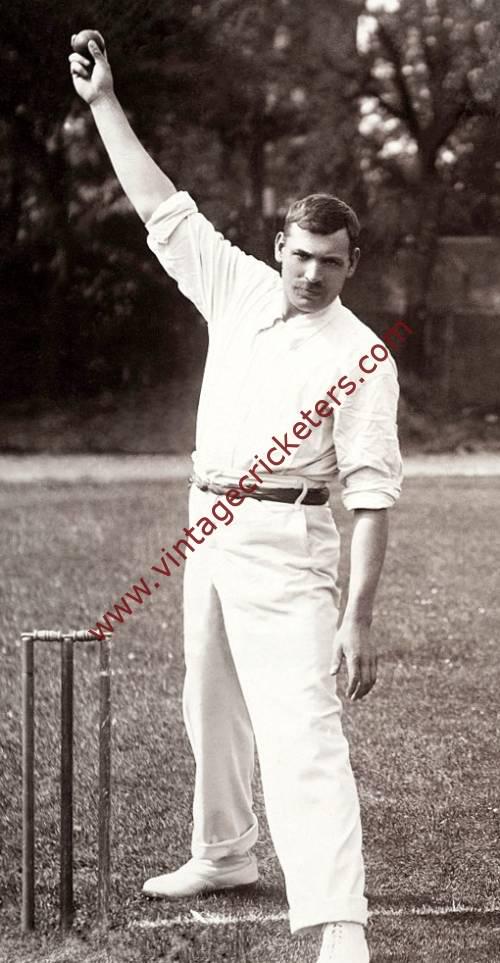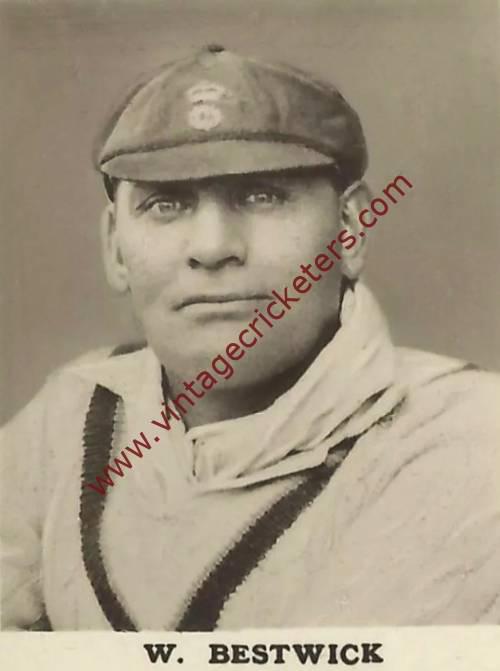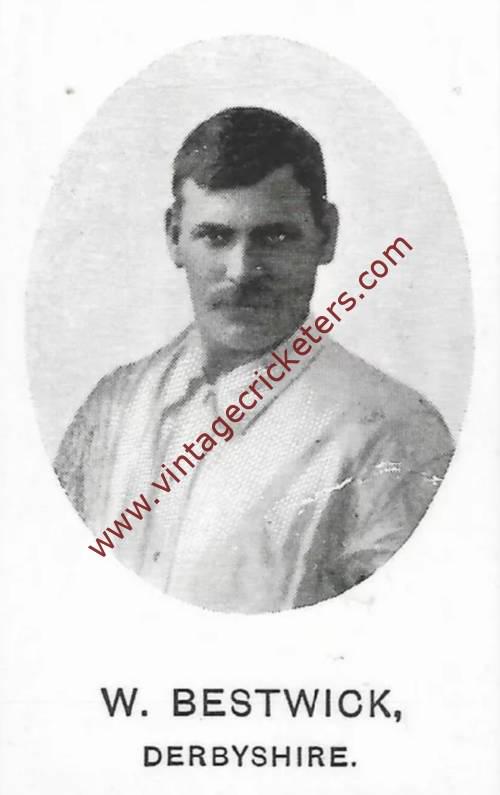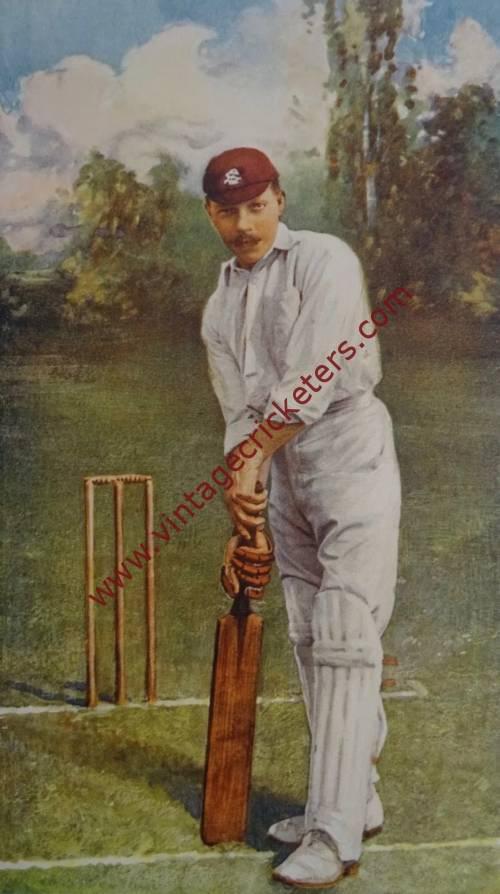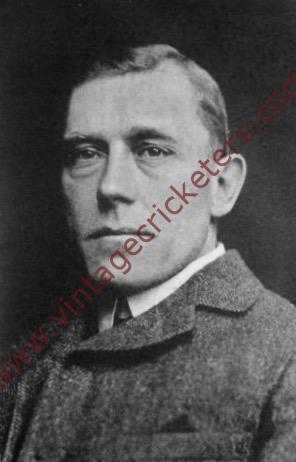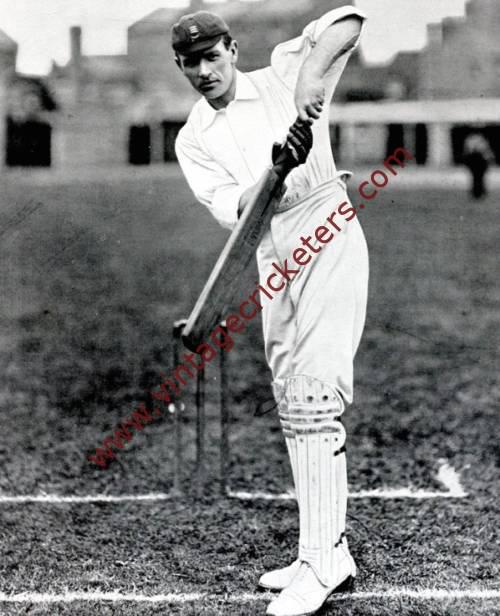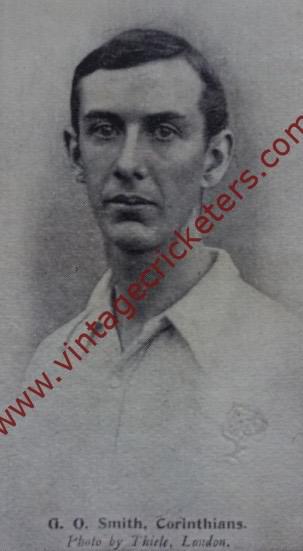Please choose your photo size from the drop down menu below.
If you wish your photo to be framed please select Yes.
Note: 16″x 20″not available in a frame.
Images can also be added to accessories. To order please follow these links
£8.95 – £49.95
Please choose your photo size from the drop down menu below.
If you wish your photo to be framed please select Yes.
Note: 16″x 20″not available in a frame.
Images can also be added to accessories. To order please follow these links
The maximum number of views of this element is reached.
Please contact the webmaster to enable unlimited views.
Tag Hill, Heanor, Derbyshire born Billy Bestwick played for Derbyshire between 1898 and 1926. He was a demon medium-fast bowler who took over 1,400 wickets for the County, including 10 in one innings. From his wild temperament and reckless behaviour, he was known as a “bad boy” of cricket.
Bestwick made his debut for Derbyshire in 1898 as a professional, although still working as a coal miner in winter. He is one of only two bowlers to have hit ten wickets in a single innings for Derbyshire, a feat he achieved in June 1921, the other being England international Tommy Mitchell. He was a true tail end batsman, who never averaged above eight with the bat in a single season for Derbyshire, and did not once reach twenty in his last two hundred and eighty first class innings, a run of batting failures equalled only by Eric Hollies between 1939 and 1954. This extreme weakness as a batsman (and also in the field) was probably why Bestwick never managed a Test cap.
Though Bestwick finished with the second weakest average in his debut season, he proved himself capable with best bowling figures of an expensive but successful 4-163. While Derbyshire were bottom of the 1899 Championship table, the team were looking for an upturn in fortunes. A season average of six with the bat would not initially indicate that thanks to Bestwick’s best single batting performance of his career, an innings of 39 against Surrey, Derbyshire finished above Leicestershire and the winless Hampshire in the season’s Championship table.
Derbyshire played host to a team of South Africans in 1901, as the young Test nation played a series of eleven warm-up matches against English County sides prior to a Test series against the English cricket team. However, a publicity boost such as this only served to panic an ever-spiralling Derbyshire team into once again finishing in bottom place in the table. The following year, 1902, was slightly more encouraging for Derbyshire, as, boosted by the appearance of long-time Warwickshire player Thomas Forrester, after three years out of the game, Derbyshire finished in their highest position since the beginning of Bestwick’s career, tenth place. Bestwick bowled very well in a summer when pitches were almost always too wet to suit a bowler of his pace, and was probably the second best fast bowler in County cricket after William Lockwood.
In 1903, Derbyshire finished twelfth, though the following season saw Derbyshire back up to tenth place, and Bestwick with one more ten-wicket match, beating out left-hander John Hulme, who had the best single-innings tally of the team with 8-52, but no ten-wicket haul to speak of, though Arnold Warren was to hit two similar hauls and outscore Bestwick with the bat, courtesy of a brace of half centuries. Thanks to another South African tour, Derbyshire got full-on experience of an international side during the 1904 season, and Bestwick was to hit an average of under 30 once again, as he and Warren spearheaded the Peakites’ bowling attack, as the two players missed just a single game of the eighteen Derbyshire played throughout the season between them.
1905 was very little of a rise before a fall, as Derbyshire handed debuts for fifteen players in first class cricket, ten of whom played fewer than five first class matches, as Derbyshire finished with a −64% winning percentage, the third worst of the season.
Bestwick was noted for his unpredictable nature and his alcoholism after his wife left him in 1906, and this adversely affected his cricketing career. In 1907 after a night’s drinking, he killed a man in a fight, although the inquest at the pub the next day brought in a verdict of ‘justifiable homicide.’
The late 1900’s saw more painful times for Derbyshire as Derbyshire finished second bottom of the table. In 1909, Bestwick played in his final County Championship game for nearly ten years. He was sacked and went to South Wales, where he re-married and played for Glamorgan in the Minor Counties Championship in 1914.
In 1919 44-year-old Bestwick was invited to rejoin Derbyshire in a revitalised Derbyshire team, and with Arthur Morton as his minder. The side was led at various times by captains Richard Baggallay, Guy Jackson and John Chapman, the team’s three season captain before the outbreak of the Great War, and the eldest of the Hill-Wood brothers, Basil. Derbyshire finished in ninth place.
He could still bowl at full speed for long spells because he relied on a short run with the power of his arm and body giving pace to the ball and lift from the pitch. Bestwick was practically blameless for Derbyshire’s bottom placing season of 1920, after playing just one game for the team. In 1921 he took 147 wickets at an average of 16.72 runs apiece. In the match against Glamorgan at Cardiff, Derbyshire were 85 behind on the first innings but then Bestwick dismissed all the home side, seven clean bowled, recording career best figures of 10-40, taking 14-111 in the match as Derbyshire won the match. Despite being 46 years old at this time, he was still turning out regular appearances for a team whose appearances further up the table seemed indicative of a change in fortunes, until 1924 saw Derbyshire winless in 24 County Championship games and rooted to the foot of the table.
In his career, Bestwick played 323 first class matches and took 1,457 wickets at 21.28 a piece, with a decent economy rate of 2.62. He also took 90 catches in first class cricket and scored 1,607 runs at an average of 4.71.
Beswick’s son, Robert Bestwick, later played cricket for Derbyshire, father and son playing two games together during the 1922 season. Bestwick, aged fifty, and having outlasted his own son in the first class game, played seven games in his final season in 1925.
He became an umpire and umpired 238 first class matches, including three Tests against South Africa and Australia in 1929 and 1930.
| Weight | N/A |
|---|
